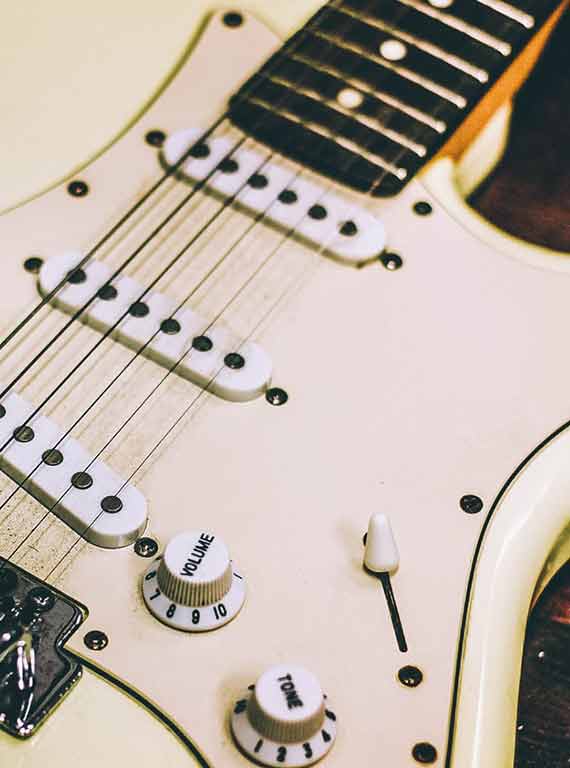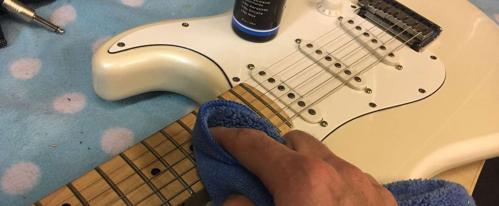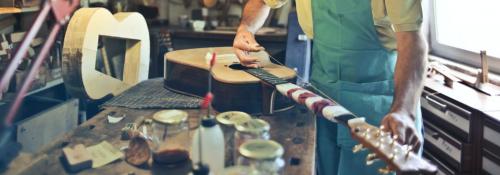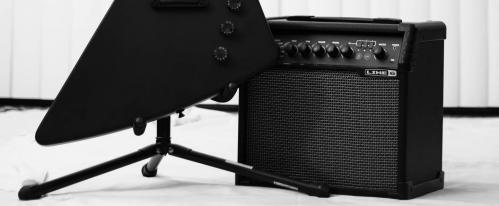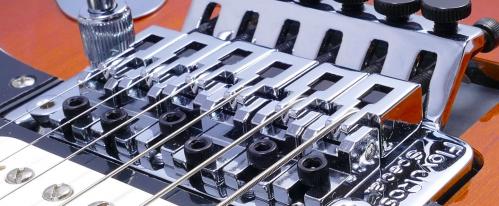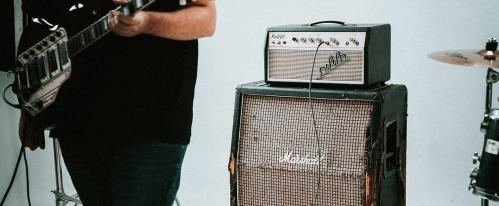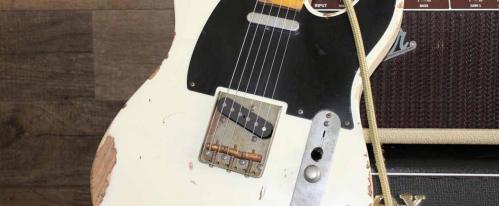If you really want to make a guitar yours, here’s some essential (and fairly easy) electric guitar setup and modification ideas that will improve playability and really help you get the best out of your instrument
Whether you’re a seasoned player who regularly takes their instrument for a guitar setup with a tech or you’re just curious about what guitar modifications you can make that’ll improve your guitar and overall playing experience without costing the earth, you should really find out what you can do yourself. Being able to make changes to the playability and performance of your guitar is an invaluable skill as it allows you to customise your guitar to your specific needs and deal with smaller problems should they arise.
So today, we’re going to look at a selection of essential, yet very easy, guitar setup and guitar modification tips that you can organise yourself, or at the very least, ask a guitar tech to look into for you.
Please note, these tips are mainly for cheaper, beginner guitars and are ideal for those who don’t want to completely upgrade to a new guitar. You’ll find that a few tweaks here and there will turn a potentially ‘OK’ guitar into your number 1 workhorse.
1. Change the tuners
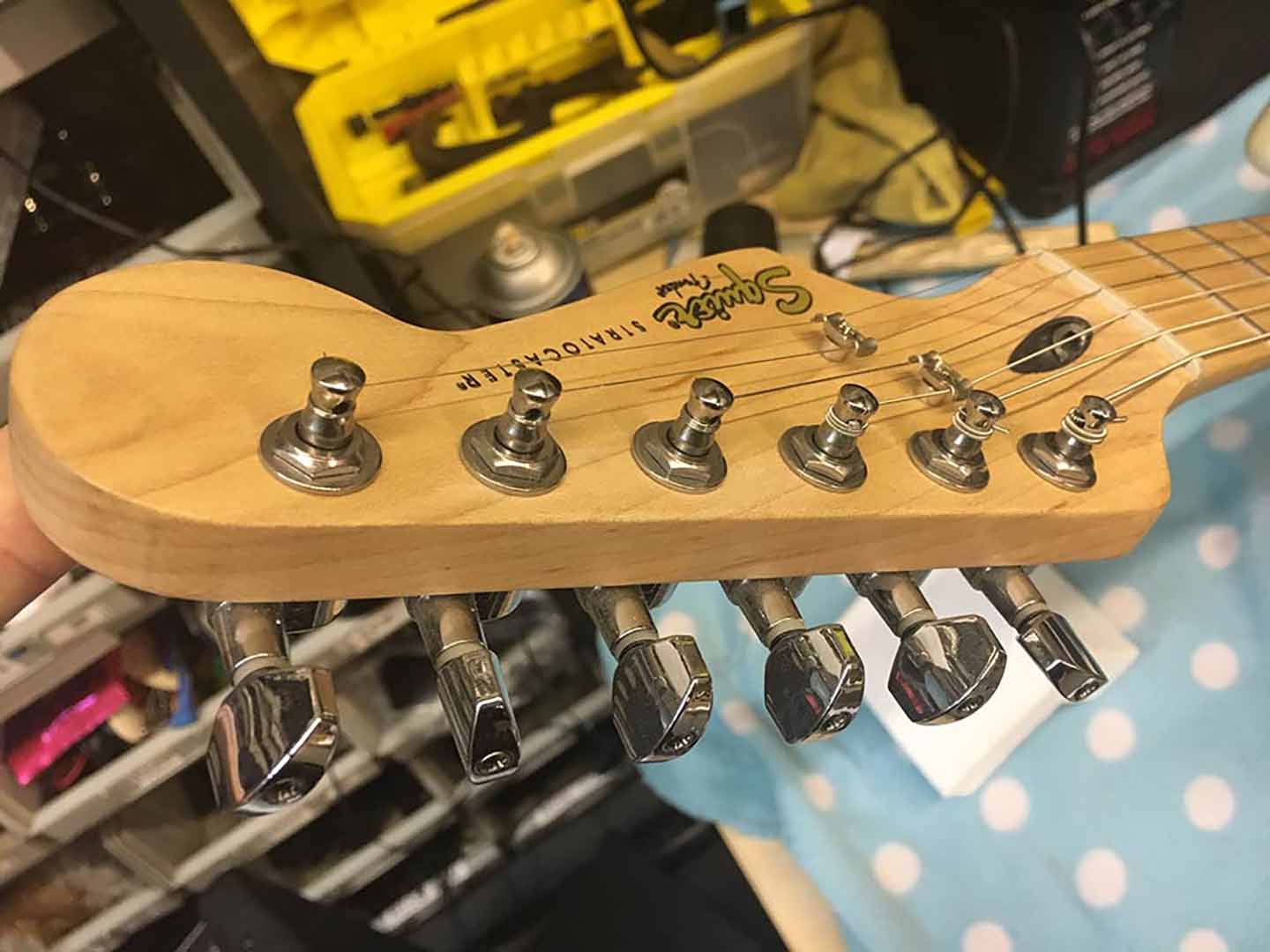
If you’ve bought an inexpensive guitar, chances are the tuners that came with it aren’t as good as tuners on your new Fender Custom Shop Stratocaster. It doesn’t mean they’re bad, it just means that they could probably use an upgrade. Stock tuners will do the job, but a good set of guitar tuners/tuning pegs will help keep your guitar in tune whilst you’re jamming away and keep you sounding good even after a longer playing session. Cheaper tuners tend to slip the tuning after a while, whereas a set of quality tuners, like Grover or Fender locking tuners will keep your sound locked in. So, you should consider an upgrade to after market tuners if you have a cheap guitar. This will really improve the overall tuning stability of your guitar.
2. Adjust your nut

With some stock guitars, the string height at the nut can be quite high. This is not necessarily a bad thing, but it can cause your strings to have a higher action which can sometimes be uncomfortable and affect the intonation of the guitar.
To change the height, you just need to carefully, and evenly file down the height. You can do this with a specifically designed nut file or you can do it with a generic file with small teeth. Slow and steady wins the race here. Don’t go too far or you may damage your guitar. Just take off a little at a time.
This will help with unwanted string height problems and allow the intonation to settle down.
3. Intonation
You should regularly check the intonation of your guitar. If you don’t know what that means, it’s basically to check if the guitar is in tune when the string is played open and at the 12th fret. If not, you need to adjust the saddles slightly forward or back to get the guitar in tune across the entire fretboard. This ensures that the notes you play are in tune wherever you play. Identify the string with a problem and move the saddle fractionally.
4. Add graphite to the nut
For tuning stability and to ensure the string moves in the nut appropriately, you need to add something that will encourage positive friction. Simply add a little graphite lead, found in a pencil, in the grooves of the nut when you change strings. It’ll help tuning stability as the string will move correctly and not get stuck when you bend or tune up/drop down.
5. Change your pickups

One of the major reasons we buy a new guitar is because we either want a different sound to what we’ve got or a better sound altogether. Again, with some cheaper guitars, the pickups you get can be a little lacking in the power department, or we simply just don’t get along with them. In addition, we may have a particularly high-quality guitar that we just want to sound different. Either way, changing your pickups as part of your guitar setup or modification can be a great option that will cost a LOT less than changing your guitar. You can buy 2nd hand pickups or go for brand new options. Brands like Seymour Duncan and Fender sell pickups separately and have different options to suit your taste. Feel like putting a humbucker in a Strat? Go for it. Feel like you need more power from your humbucker? Try some EMG active pickups. The choice is yours and with a little patience and soldering iron can be done quite easily.
Shop a full range of pickups over at PMT Online.
6. Change the volume pots

If you’re a guitarist who likes to ride the volume pots on your guitar, you may sometimes notice (especially on older guitars) that they don’t respond as accurately as you need them to. Getting hold of some aftermarket volume pots can really change your sound for the better. The likes of the Fender Treble Bleed circuit for example can be installed to ensure your sound responds accurately when you change the tone and removes that muddy sound that can sometimes creep in when you dial the volume back. If you’re finding the volume pot is either on or off and there’s no real ‘bloom’ or ‘Swell’ when you turn the volume up, consider installing an audio taper volume pot which offers a gradual, more swelling volume sound.
Here’s an example of what an audio pot change can do for your sound:
7. Change your strings

This may sound obvious, but changing your strings can make a massive difference when it comes to playability. As a general rule, most electric guitars come with a medium gauge string, known as 10s. These strings are great all rounders and are used by guitarists everywhere. However, you may prefer a lighter gauge string such as a set of 9s, especially if you like bending a string or a heavier set if you’re into your riffs and you need a stronger tension from the likes of 11s or even 12s. There’s no one set of strings right for every player so experiment with different gauges to see what you prefer. Who knows, this could really change how you feel about your guitar.
Shop a full range of guitar strings over at PMT Online.
8. Get a set of strap locks
A set of strap locks is an essential guitar setup purchase and an extremely easy modification to make that has an instant effect – peace of mind! There’s nothing worse than playing your guitar stood up when all of a sudden, the strap fails or slips off the strap peg and the guitar hits the floor! Strap locks stop this from happening and allow you to play with confidence. One part attaches to the strap itself whilst the other replacement peg screws into your guitar. All you do is slot the two pieces together and you’re locked in. If you haven’t got a set of strap locks, you should really look at changing your regular pegs out!
Shop strap locks over at PMT Online.
If you don't feel like messing about with the existing straplocks, the likes of the Daddario Auto Lock Guitar Strap fits over your existing strap button without the need for removing anything.
9. Pickguard covers
This is a simple, but pretty effective way of personalising your guitars. Changing the pick guard can completely change the way your guitar looks and really help you feel better about your instrument. Not happy with your regular cream Fender Stratocaster pickguard? Change it out for a tortoiseshell one. Feel like your Gibson Les Paul needs a different look? Remove the pickguard altogether for a cleaner streamlined look.
10. Remove hum with extra shielding
A guitar that hums or has a whole lot of unwanted noise or hiss can be really distracting, so it’s worth adding a little extra shielding whilst you’re under the hood changing the pickguard. This shielding is essentially a load of foil tape that prevents any external electronic devices from interfering with your sound or causing a lot of noise. Of course, some guitars will hum, but there’s a BIG difference between the hum of a guitar and the hum of an unshielded one.
All you have to do is buy a roll of foil tape and completely cover the cavity in your guitar and the back of the pickguard. If you’re not confident with electronics, we recommend giving it to a guitar tech who will be able to make sure it’s done correctly. But it should make a big difference if you have a noisy guitar.
Check out the video below:
11. Change the bridge

Depending on your playing style, you may want to consider changing the bridge of your guitar. You rarely have to change the bridge of a guitar due to a problem, as it basically comes down to personal preference, but if you have the likes of a Fender Strat with a trem arm, but you don’t use it, consider swapping for a hard tail as you’ll get far more resonance. Another common swap is the dreaded stock Jaguar bridge. These are notorious for letting the string fall out the saddle which is why Fender have changed them in recent years. But if you have an older model with a stock Jaguar/Jazzmaster bridge, consider swapping it out for a Fender Mustang or Mastery bridge for greater stability. A good bridge will increase tuning stability and resonance, so if you’re finding that the strings are coming out of the saddle, snapping or your strings are quite ‘dead’ sounding, consider a new bridge altogether when you next get a guitar setup.
12. Split the coil
If you have a guitar with humbuckers, yet you want a bit more versatility, consider having a guitar technician splitting the humbucker and installing a push/pull pot. This is a fairly easy way of getting a different sound from your guitar without changing pickups. This is a little more complicated than a regular guitar setup, so unless you’re good with electronics, we suggest taking it to a professional!
13. Get a good guitar setup from an experienced tech
Finally, if you don’t feel confident doing any of these things yourself, take your guitar to a technician for a professional guitar setup and service. Although guitars are made with high quality processes in place, adverse temperatures can affect your guitar when they travel from their destination country. This means tuning, intonation and sometimes the neck of the guitar can sometimes be out. You may like lower frets dividers, you may like higher action or you may want your bridge modified to accept super heavy gauge strings without bending the guitar’s neck. With all this in mind, it’s worth handing your guitar over to an experienced technician to ensure it’s at it’s absolute best so you can enjoy it more. Try taking it to a guitar tech and seeing the difference it can make. It can mean the difference between you never playing guitar and picking it up all the time.
Your local PMT store has dedicated guitar technicians ready to help you make almost any modification you need and can offer a complete guitar setup to get you playing again. Whether you have a new guitar or you want to give your old instrument a new lease on life, speak to us today and let us help you get the best out of your guitar.
Find your local PMT store and get your guitar setup today or contact us on 0151 448 2089 to discuss your guitar modifications!

